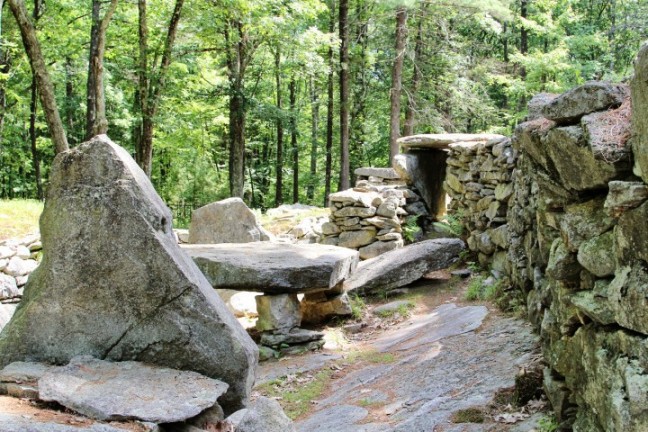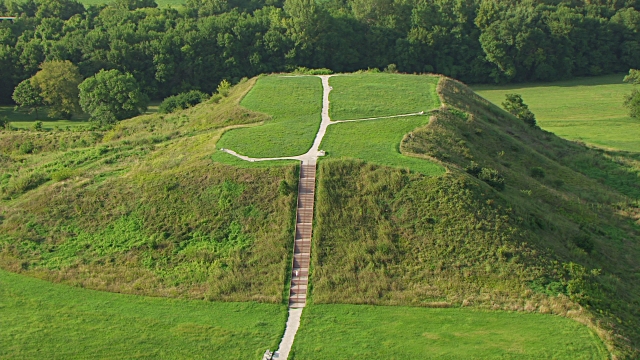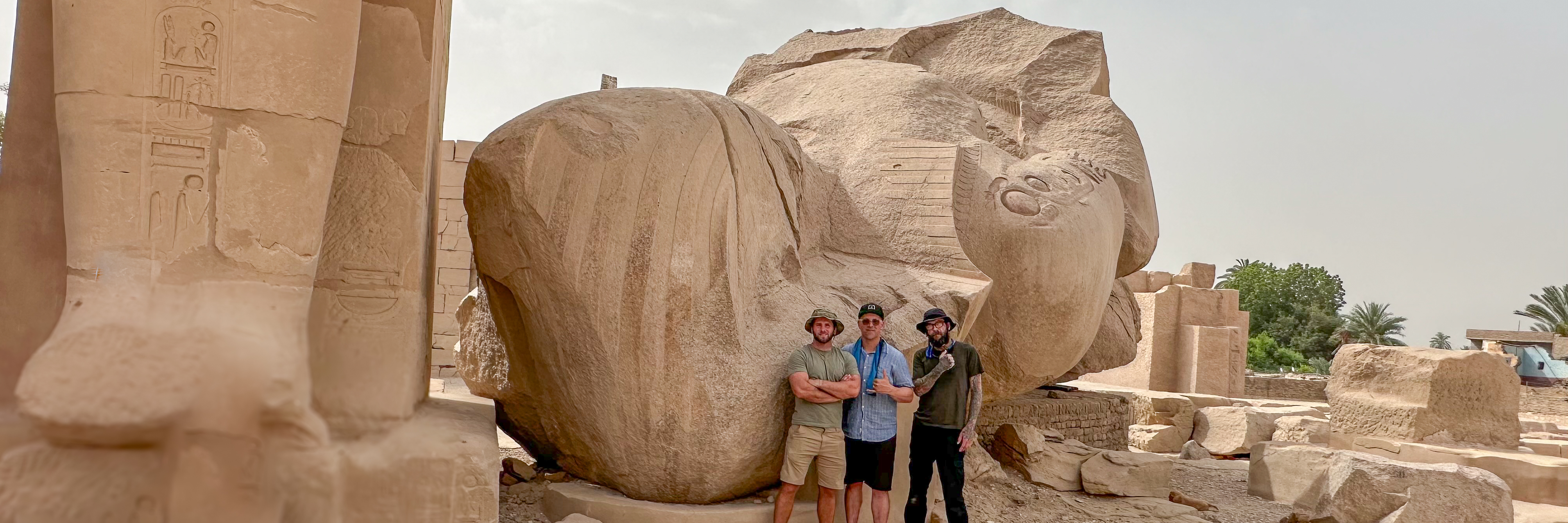There is so much more to America’s ancient history than we have been lead to believe by main-stream archeology. A repeated effort to clear the historical record of all references to a pre-Indian Caucasian culture in the United States can be seen as working in harmony with the NAGPRA policies of the federal government, which works on agendas based on political correctness and not objective science. 1 But as you are about to see, there is much evidence to prove otherwise. Here are 5 ancient anomalies that have been discovered in America.
#1 Serpent Mound
Photo by scott_295 “Great Serpent Mound”
The Great Serpent Mound is the largest serpent effigy in the world. Serpent Mound is a 1,348-foot-long, three-foot-high prehistoric effigy mound on a plateau of the Serpent Mound crater along Ohio Brush Creek in Adams County, Ohio. Most recent dating places the mound at around 300 BC. The serpent winds back and forth for more than eight hundred feet and seven coils, and ends in a triple-coiled tail. The serpent head has an open mouth extending around the east end of a 120-foot-long hollow oval feature that may represent the snake eating an egg. In 1987 Clark and Marjorie Hardman published their finding that the oval-to-head area of the serpent is aligned to the summer solstice sunset. 2 Serpent Mound sits on the southwest edge of a ‘crypto explosion crater’ that has powerful magnetic and gravitational anomalies going deep into the earth, even as far as the mantle. A giant skeleton had been unearthed from the mound, that was rediscovered printed on an old postcard with a note saying it was 7 ft tall. However the skeleton had its shins and feet missing, so it could easily have been 8 ft. 3
#2 America’s Stonehenge

America’s Stonehenge is an archaeological site consisting of a number of large rocks and stone structures scattered around roughly 30 acres within the town of Salem, New Hampshire in the northeast United States. Carbon dating of charcoal pits at the site provided dates from 2000 BC to 173 BC. 4 Like Stonehenge in England, America’s Stonehenge was built by ancient people well versed in astronomy and stone construction. It has been determined that the site is an accurate astronomical calendar. It was, and still can be, used to determine specific solar and lunar events of the year. Various inscriptions have been found throughout the site including Ogham, Phoenician and Iberian Punic Script. Dr. Barry Fell of Harvard University did extensive work on the inscriptions found at the site. 5
#3 Spirit Cave Man

13 miles east of Fallon Nevada is Spirit Cave. In 1940, two very well-preserved mummies were found expertly wrapped in highly sophisticated weaving by Sydney & Georgia Wheeler working for the Nevada Sate parks division. The mummies were radio carbon dated to 9,400 years before the present. DNA testing of the mummies by Douglas W. Owsley, division head of physical anthropology at the Smithsonian’s National Museum of Natural History revealed that the mummies were of Caucasian origin, with a long face and cranium that most closely resembled either Nordic or Ainu ancestry and bore no ancestry relationship to either the Paiute or Shoshone tribes. This groundbreaking news has received barely a glimmer of attention in the outside world. 6
#4 Cahokia Mounds

A thousand years ago, huge pyramids and earthen mounds stood where East St. Louis sprawls today in Southern Illinois. This majestic urban architecture towered over the swampy Mississippi River floodplains, blotting out the region’s tiny villages. At the city’s apex in 1050, the population exploded to as many as 30 thousand people. It was the largest pre-Columbian city in what became the United States, bigger than London or Paris at the time. Its colorful wooden homes and monuments rose along the eastern side of the Mississippi, eventually spreading across the river to St. Louis. One particularly magnificent structure, known today as Monk’s Mound, marked the center of downtown. It towered 30 meters over an enormous central plaza and had three dramatic ascending levels, each covered in ceremonial buildings. 40 years ago Illinois declared Cahokia a state historic site, and UNESCO granted it World Heritage status. 7 There is some evidence of occupation during the Late Archaic period (approximately 1200 BC) in and around the site 8
#5 The Lovelock Cave Artifacts and Giant Skeletons

Photo by Don Monroe
About 93 miles northeast of Reno and situated in a small peak inside an outcrop of limestone that forms part of the Humboldt Mountains, Lovelock Cave sits like an ancient fortress. In 1912, archeologists began to uncover over 10,000 artifacts and specimens from the cave. Discoveries included a donut-shaped stone calendar, duck decoys considered to be some of the world’s oldest and most elaborate ever discovered and giant-sized weapon shafts and pestles. The most shocking discoveries were that of a child-like mummified humanoid and several skeletons with red-hair ranging from 6 foot 6 inches to upwards of 10 feet in length. There are a handful of people who have testified to seeing giant skulls from Lovelock cave in a storage room at the Humboldt Museum in Winnemuca, Nevada. This photo was taken by Don Monroe in the 70’s.
 Click here to read “16 Enigmas Concerning the Nazca Lines“
Click here to read “16 Enigmas Concerning the Nazca Lines“
Sources
[1] Dewhurst, Richard J, The Ancient Giants who Ruled America, 288, 2013
[3] Newman, Hugh, Serpent Mound Adam’s County, Ohio, 2012
[4] Wikipedia, America’s Stonehenge
[5] Stonehengeusa.com, America’s Stonehenge
[6] Dewhurst, Richard J, The Ancient Giants who Ruled America, 276-278, 2013


